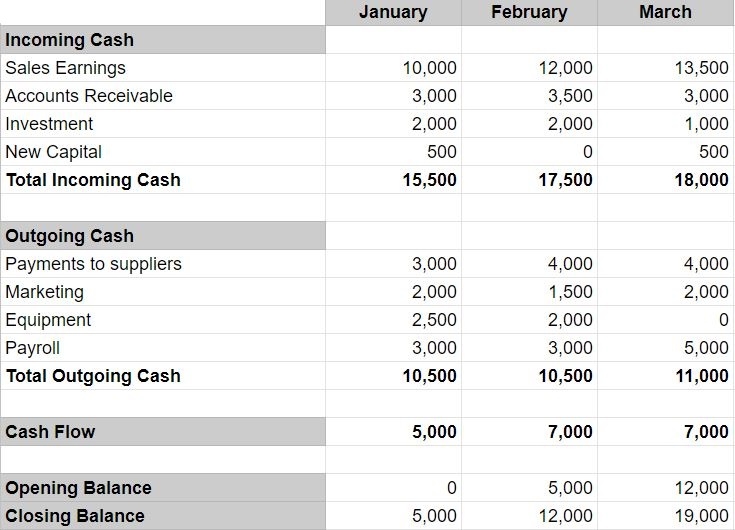Cash flow forecast - What is a cash flow forecast?
A cash flow forecast aims to provide a business with an estimate of incoming and outgoing cash over the course of a given time period
Cash flow forecasts are a great tool to help create a budget for the upcoming period. But actually managing your cash flow is vital to the success of your business. Read more on our blog: ‘6 ways to improve cash flow in your business’.
Also called ‘cash flow projection’, the cash flow forecast is conducted by a business with the intention of determining the expected income and costs that the business will face over the time period specified in the forecast.
Cash flow is simply the movement of incoming and outgoing money from your business.
Parts of a cash flow forecast
The forecast, focusing on incoming and outgoing cash flow is often broken down into different sections to better pinpoint the expected amounts for each particular section. Cash flow forecasts are typically divided into sections such as:
Incoming cash flow
Incoming cash flow will include any cash or asset with monetary value that will be coming into the business. You should break the incoming cash flow section into subsections with items such as:
- Expected earnings from sales
- New capital
- Loan advances
- Sale of asset
- Accounts receivable
Outgoing cash flow
Outgoing cash flow is any cost or expense experienced by the business during that period. Similar to the incoming cash flow section, this section should also be divided into subsections to clearly identify where the money is going. This may include:
- Payments to suppliers
- Daily cost of operations
- Loan payments
- Employee costs
- Accounts payable
The categories will vary depending on the business. Small businesses might have fewer categories than larger corporations, and specialised industries might also have other categories that are important to consider.
Why create a cash flow forecast
Businesses will create a cash flow forecast for an upcoming time period. In the forecast, a time period will be determined (usually the next quarter, for example), for which a projection of the anticipated transactions will be plotted.
The cash flow forecast helps to predict the financial condition of a company over the specified period of time. These forecasts are generally based on previous conditions, cash flow, and forecasts.
Cash flow forecast example template
Below, I have provided an example of a cash flow forecast template. Depending on your business income and expenses, you can tailor the subcategories to what suits your business model.
The cash flow forecast should always include all incoming cash, outgoing cash, and the net cash flow (incoming cash minus outgoing cash). If the net cash flow is negative, that means your expenses are higher than your income and you are potentially losing money.
You may also consider adding the opening and closing balance of your bank account to your cash flow forecast. Simply add any positive cash flow to the opening bank balance, and subtract any negative cash flow from the opening balance. The closing balance for one month will then become your opening balance for the next month.

Advantages of cash flow forecasts
Cash flow forecasts can be a useful tool for businesses if used correctly. Some advantages to cash flow forecasts include:
- Can help you create a reasonable budget
- Will help you assess if you need new loans, or how much can be paid back to existing loans
- Will help management make financial decisions
- Will help stakeholders and investors review the stability of the company
Disdvantages of cash flow forecasts
As with all things, there are some downsides to cash flow forecasts. Make sure you weigh the pros and cons to decide if it will work for your business. Some disadvantages to cash flow forecasts include:
- Unforeseen factors, such as government regulations or technology changes, can greatly affect cash flow
- The forecasts are rough estimates and never 100% accurate
- May provide a business with a false sense of security - these forecasts should always be compared with actual financial statements, such as the profit & loss statement
Managing cash flow with accounting software
The easiest way to stay on top of the incoming and outgoing cash flow for your business is with online accounting & invoicing software like Debitoor. Enter payments on invoices, upload expenses, and balance your accounts all in one place.
With Debitoor, you can get a real-time overview of your cash flow from any device with an internet connection! Any time you enter an expense, issue an invoice, or accept a payment, your accounting reports will be updated automatically so you can make sure your business is sticking to the budget.
